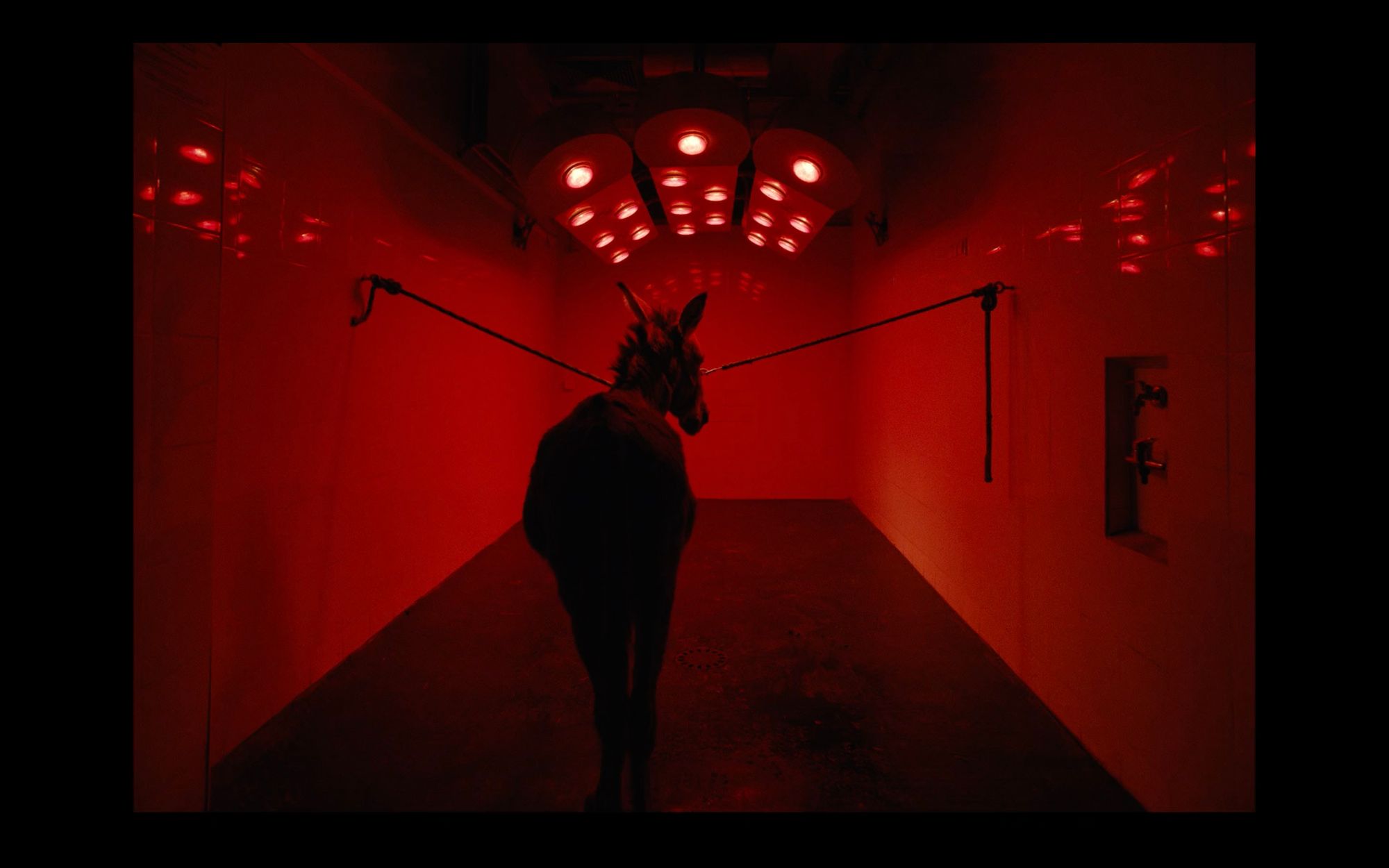London Film Festival 2022: ‘EO’ Review

Originally published on 18/10/22 for the UCL Film & TV Society's Journal
Something that becomes apparent very swiftly about Polish genre maverick Jerzy Skolimowski’s first feature in 6 years, EO, is how strongly anchored it is to its surroundings. Nary a moment disrupts the illusion that we are experiencing precisely what the titular donkey is, flitting between landscapes of sleet, soil and snow without hint of gentleness. This is a both stark contrast to and a comfortable continuation of the mode of filmmaking Skolimowski typically operates in- much like The Shout, there is the echoing of a nigh-primordial presence that makes itself known through turbulent storms. Unlike that film, however, EO is entrapped within a formal vocabulary that is communicated tersely from beginning to end; even the sequences that are ostensibly dreams are shot in such a way so as to recall the pleasant glow of memory or the overbearing presence of mechanization, rather than something more overtly fantastical. Instead, the film has much more in common with the heavily underappreciated Essential Killing (as opposed to Skolimowski’s more broadly appreciated output in the 70s). Sublimating within the harsh Polish winds a protagonist only slightly less haggard in appearance than Vincent Gallo, EO is the tale of a symbol whose fallibility is all too evident- it is elevated to the status of political object, benevolent miracle and an ontological counterpart to the humans whom he encounters along his journey. Yet, the film never loses sight of his expediency, underscoring brief respite from danger via framing the protagonist as an alien walking amongst a civilization alien to him. It is only fitting, therefore, that so many of the film’s compositions (a tenuous phrase, considering how much of it is constantly in motion with no clear interruptions) function to dislocate, rather than situate, its equine lead against the unflinching cruelty of man and beast alike. Simultaneously, however, the film never loses sight of the deeply pertinent roots of real-world exploitation that it derives its emotional catharsis and grief from.
In adapting the narrative structure of Bresson’s Au Hasard Balthasar, the film resurrects the familiar, almost fairytale-like, parable of the innocent wandering amongst a world that pays no heed to it. As opposed to chronicling the lives of the humans the figure of the donkey encounters, however, it is centred squarely on the sensorial qualities of how EO experiences the world around him. What is obscured via the film’s abstraction of its images is communicated through its impeccable sound design, which muffles voices and sharpens shrieks. The often jolting cuts to the realm of the industrial disrupt the almost Malickian rhythms of the film- early on, a POV shot of a trash compactor at a junkyard appears as a predatory entity with clanking jaws of steel. If the effect of this auditory landscape is largely overwhelming, it is because the film’s concerns with the phenomenology of being extend to situating the audience within EO’s experiential sphere by assaulting it with a barrage of sound. The aforementioned abstraction of images is of particular interest, since whilst the auditory landscape surrounding EO is universal and omnipresent, the projection of images via his eyes is largely limited to fleeting glimpses and flashes of light. Rather than constraining the extent to which EO’s perspective is represented, these brief intrusions of blurry corneas heighten the escalating sense of terror inherent to the film. In one of its most affecting deployments, we witness EO being pummeled to the point of unconsciousness by a gang of football hooligans- a ring of light emanating from a nearby streetlight widens with each blow until it obscures the entirety of the frame, flowing towards the sky as its perceiver sinks towards the ground.
In line with its situating of EO as its mute observer, the film stages tableaus of humanity as outlandish rituals conducted by beings of an unstable temperament. As opposed to adopting a documentarian approach to a subject that would mesh with documentarian tendencies, Skolimowski chooses to direct this approach towards not EO but the humans he interacts with- and often to amusing effect, particularly in how a countryside football match is shot in comedically languid terms. Much of what offsets its otherwise relentlessly dour tone is the sort of physical comedy exhibited in EO clumsily navigating his way through towns, whilst in deliciously slapstick irony, the individuals who he comes across seem even more hapless than him. Its forays into the realm of the human are not always as captivating as when the film is focused on EO- a filial digression involving Isabelle Huppert is largely an unwelcome reprise from EO trekking across the French countryside. For all its staging of EO as an all-encompassing symbol, the film’s observations on cruelty and the ruthlessness with which hapless animals are converted into raw material for the preservation of industrial society come off as rather passé. Admirable as its attempts at such commentary (the source of which Skolimowski claimed turned him into a vegetarian) are, it is considerably more fascinating when it explores the phenomenology of EO’s being- how he sees, and how people see him. This applies not just to its form but to its emotional currents, since its refrain from cloying sentimentality gives way to a broader portrait of the titular donkey’s psyche. Intermittently, the film slips into EO’s dreams, in which the texture of muscle is evinced so acutely in what seems to be his longing to be a horse. It is in these moments of longing superimposed against stark, unforgiving wintry landscapes that the film attests to something not unique to EO, but instead something primal and deeply human, without grounding itself in anthropomorphism.
